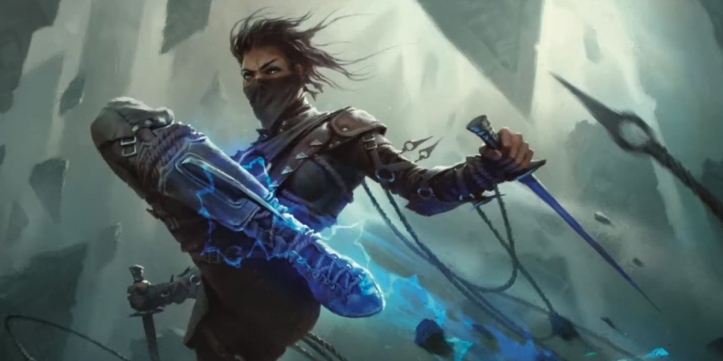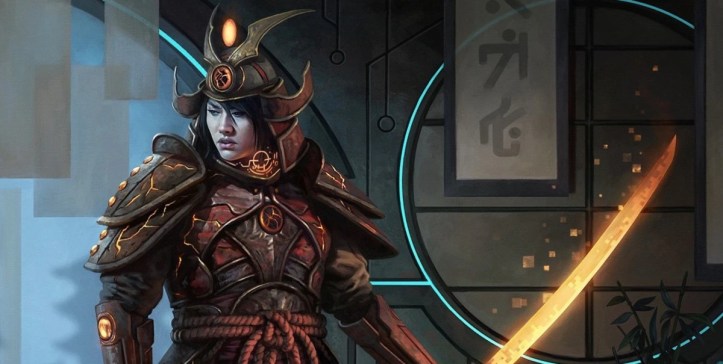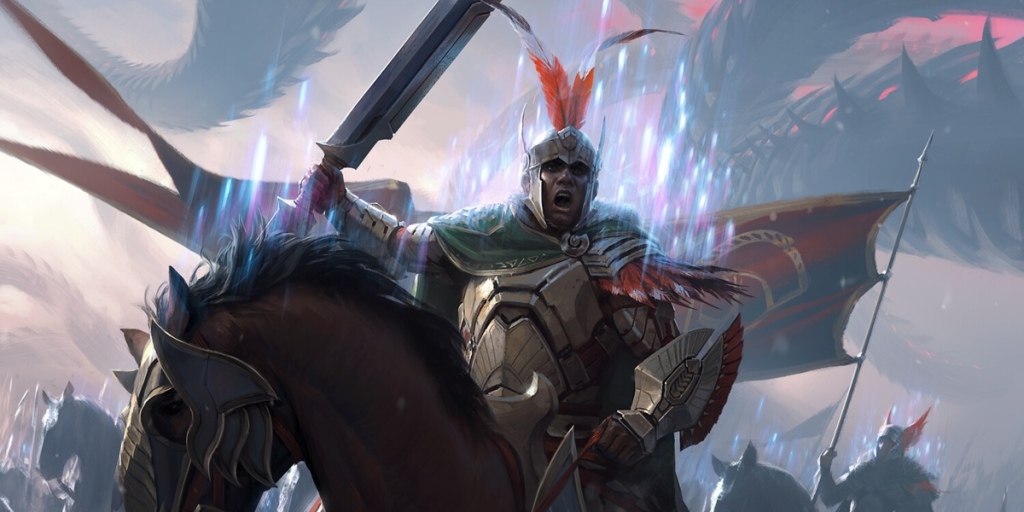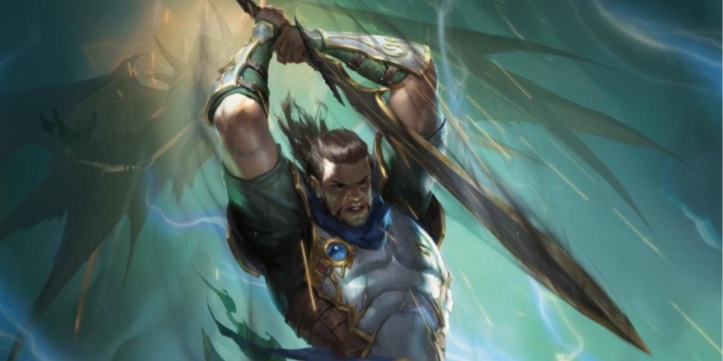The Fighter has a reputation as one of Dungeons & Dragons Fifth Edition‘s simplest classes. In many cases, it’s definitely easier to build and more straightforward to play than a complex spellcaster like Wizard or Sorcerer. However, that doesn’t make it basic and weak.
Fighter subclasses in D&D 5e bolt new martial (and sometimes other) features onto the solid, reliable class chassis. They range from the straightforward, practical Champion to the versatile Battle Master, each filling a different niche in both combat and character-building.
Few subclasses are actually weak. Almost all of them are playable, and this holds true for the Fighter as well. That said, not all D&D 5e Fighter subclasses are made equal. While some stand out as unfortunately poor, many more stand out ahead of the pack.
Many subclasses for the D&D 5e Fighter rank among the top tier, giving players many possibilities for build complexity and party roles. Although the entries below won’t be strictly ranked, I will be indicating which are merely very good and which are the best of the best.
Psi Warrior Fighter Takes a Middle Ground

The Psi Warrior is, as the name suggests, a psionic Fighter. It supplements the base class’s physical prowess with not-quite-magical mental powers. They can move objects and enemies, leap further, and overcome mental effects through discipline.
Jedi. They’re D&D 5e Jedi, and we’re all fine with this.
In terms of its complexity, the D&D 5e Psi Warrior Fighter subclass takes a middle ground. It gives the player a wider toolkit than most of its ilk. Its abilities use a shared ‘Psionic Dice’ resource pool that can be shared between its many options. Psionic Dice start at twice the player’s proficiency bonus per day and can be restored one per short rest. This lets players ration them out or spend them in a Psionic blitz depending on the adventuring day.
At the same time, the Psi Warrior Fighter in D&D 5e has a fixed list of tools, rather than the more flexible choices presented to the Battle Master, Rune Knight, or even Arcane Archer.
This isn’t a significant detriment. Almost every Psi Warrior ability in D&D 5e is worth its place on the list. Many of the more situational options have a free use to avoid direct competition with evergreen abilities.
The D&D 5e Psi Warrior Fighter gets reliable abilities like hitting for more damage (and later shoving foes back), reducing damage against allies, limited flight, ending Frightened and Charmed conditions on themselves, and more.
If you want to hit enemies hard, snatch plot-critical objects at range, move your allies to high ground with the Force, shield your entire team from harm, and smack enemies with the power of your mind, then the Psi Warrior is the best Fighter subclass in D&D 5e.
Samurai Is Straightforward and Hard-Hitting

In many cases, the most straightforward D&D 5e subclasses are among the weakest. The Champion Fighter is infamously difficult to be anything other than average with.
This isn’t universal, as the Samurai’s status as one of D&D 5e‘s best Fighter subclasses proves. The class gets neither a vast list of options nor a flexible resource pool. Instead, it gets a reliable core of abilities that reasonably expand a Fighter’s horizons.
Fighting Spirit is the core reason why Samurai is such a good Fighter subclass in D&D 5e. Advantage on every attack made in a turn, coupled with temporary hit points, is the perfect way to make Fighters better at what they do in a non-complex way.
A Samurai can take the biggest weapon they can find, make their attacks with advantage, and then Action Surge to do it all again. The result is top-tier damage (particularly with feats) that any D&D 5e player can get to grips with. Tireless Spirit means this can happen at least once every combat, with no fixed limit per day.
Bonus Proficiency and Elegant Courtier turn them into reasonable social figures in the party, able to outcompete many in Persuasion checks. It also gets invaluable Wisdom saving throw proficiency.
Higher levels take the Samurai Fighter subclass’s power to ridiculous levels. Rapid Strike lets them attack more often than any other character as long as they have advantage (easy for them to get). Strength Before Death lets a D&D 5e Samurai subclass Fighter double their effectiveness (and then possibly Second Wind to remain conscious anyway).
The D&D 5e Samurai would be a top-tier Fighter subclass for its offensive benefits alone. The straightforward (but effective) social and defensive features cement its place.
If you’re enjoying this content, consider subscribing to Artificial Twenty: Investigation Check. This is a brand-new TTRPG newsletter that covers the latest stories and media around D&D 5e, TTRPGs as a whole, and Artificial Twenty itself. Sign up here to never miss a thing, with no spam or selling of information.
Eldritch Knight is a Tanky, Ready-Made Gish

Spellcasting is one of D&D 5e‘s most powerful features due to its flexibility. As a result, it’s no surprise that the direct spellcaster is one of D&D 5e‘s most powerful Fighter subclasses.
The Eldritch Knight gets a pittance of spellcasting compared to the Wizard, and even less than the Paladin or Ranger. A well-built one doesn’t need ninth-level spells to be effective.
Players who try and play an Eldritch Knight Fighter in D&D 5e as an offensive caster will be disappointed. Instead, they should rely on defensive and buff spells to make them even more capable at destroying foes in melee.
Most Fighters in D&D 5e would kill to be able to cast Shield, Absorb Elements, Blur, Misty Step, and (relatively) higher-level spells like Haste and Counterspell. The Eldritch Knight can, to great effect.
A well-armoured D&D 5e Fighter using a defensive buff spell and Shield can be almost impossible for any enemy to scratch. Add high-power cantrips like Booming Blade and you have a character who can hold their own against almost any threat.
Notably, the D&D 5e Eldritch Knight Fighter subclass gets better whenever new Wizard spells are printed. New options like Shadow Blade, Kinetic Jaunt, and (god forbid) Silvery Barbs, all published later than the Eldritch Knight, help keep this build viable in D&D 5e‘s later years.
Plus, if all else fails, you can still cast Fireball.
Echo Knight Can Be Everywhere at Once

The Echo Knight D&D 5e Fighter subclass is another one of the overtly magical options that doesn’t get spellcasting, similar to the Rune Knight.
Instead, they summon alternate copies of themselves to fight alongside. It’s one of the coolest concepts for a subclass in D&D 5e, fitting the themes of time and destiny from Explorer’s Guide to Wildemount, matched by suitably powerful mechanics.
An Echo Knight Fighter in D&D 5e can spread out to occupy more of the battlefield than almost any other character. They effectively exist in two places at once for the purposes of attacks (including opportunity attacks), excelling in battlefield control.
Take Sentinel on your Echo Knight and you can pin enemies down thirty feet away, next to exactly zero useful targets.
Until high levels, you can only have one echo at once. However, there are no limits on how many times you can summon it. The only cost is a bonus action, which only limits a handful of Fighting Styles and feats.
On top of that, the Echo gives a D&D 5e Fighter many more useful abilities, such as up to five additional attacks per day, the ability to shield allies, and temporary hit points.
It’s not just combat features, either. The Echo Knight is such a good D&D 5e Fighter subclass for its utility. A Fighter can swap places with their echo (a resource-less fifteen-foot teleport), or send it far away while they see through its eyes and listen through its ears.
Cavalier Can Hold the Line Against Anything

The Fighter is one of D&D 5e‘s best tank classes. It gets extreme durability and some of the best armour in the game. However, most Fighter subclasses in D&D 5e lack dedicated ways to make enemies stand and fight them, rather than running past and murdering the Wizard.
Enter the Cavalier.
Almost every feature for the Cavalier Fighter subclass in D&D 5e punishes enemies for attacking your allies, trying to move to reach your allies, or even thinking about your allies. Very, very few of them are to do with horses, despite the name.
When the D&D 5e Cavalier hits an enemy, they can give an Unwavering Mark. Not only does this provide disadvantage to hit any other target, it also lets the Fighter deal a beefed-up bonus action attack on their next turn if the enemy does. This is on top of the harm they can dish out normally.
Later features let a Cavalier Fighter in D&D 5e stop enemies in their tracks with an Opportunity Attack, and eventually get almost unlimited reactions to use solely to hit enemies.
These features come alongside more general combat features, such as boosting allies’ AC and smashing enemies to the floor on any turn they move.
Other subclasses might be better for more generalist builds, but the Cavalier is the best Fighter subclass in D&D 5e for players who want to lock down the battlefield, guard their party, and punish enemies.
Battle Master Has Unmatched Versatility

The Battle Master is one of the very first Fighter subclasses in D&D 5e, printed in the Player’s Handbook. Despite this, it has remained resilient to power creep, avoiding falling behind where other options have.
This is a testament to its effective concept. The Battle Master doesn’t just make weapon attacks. Instead, it uses unique Battle Master Maneuvers, fueled by a standalone Superiority Dice system.
Some of these replicate better versions of things any character can do, such as knocking enemies prone, disarming them, or shoving them back, but as part of a weapon attack with bonus damage attached.
Other D&D 5e Battle Master Maneuvers give more unconventional options, like switching places with allies, frightening enemies on a failed save, or letting allies make a weapon attack with their reaction. Pair this last one with a Rogue and watch the fireworks.
The main reason the Battle Master is the best Fighter subclass in D&D 5e is its flexibility. There are dozens of Maneuvers to choose from, with each Fighter getting a healthy selection. You can build any Fighter you want, from a damage machine to a combat toolbox; from a debuffer to a support powerhouse.
There has also been deliberate support. Tasha’s Cauldron of Everything includes brand-new Maneuvers to help keep the subclass as the very best of the best D&D 5e Fighter subclasses.
These have been six D&D 5e Fighter subclasses that stand above more underwhelming options, and that form a good basis for an excellent character. If you’ve enjoyed this, please check out some other Artificial Twenty content (such as the suggestions below) and share it with your fans. Thank you.
If you want to improve your character further, check out ‘The Best Fighter Races in D&D 5e‘.
Perhaps you want more than just combat prowess. If so, ‘Unusual D&D 5e Build Ideas‘ has some suggestions for you.